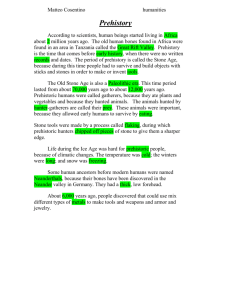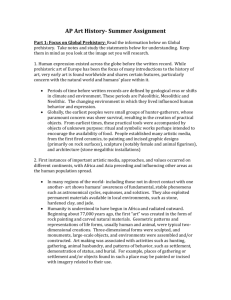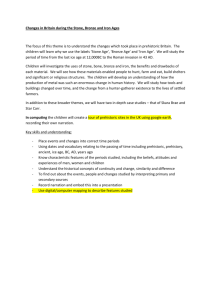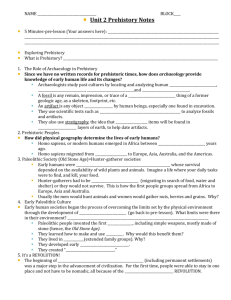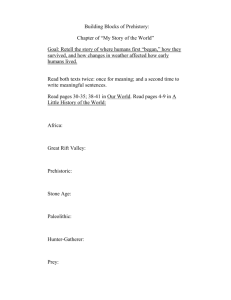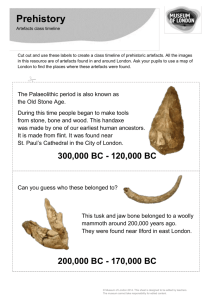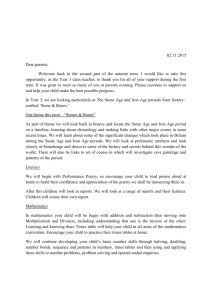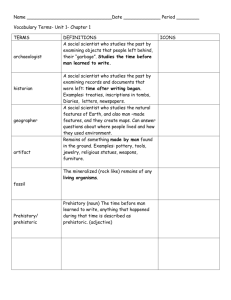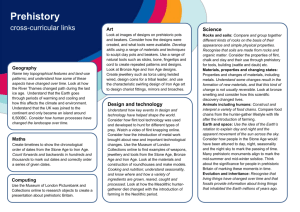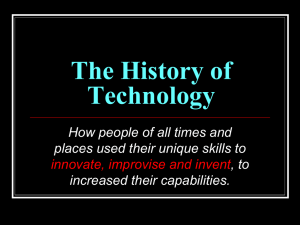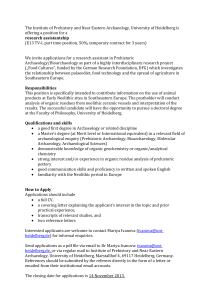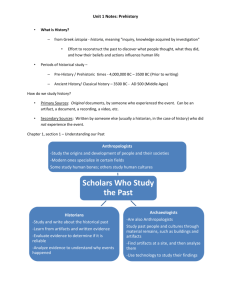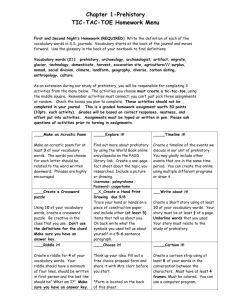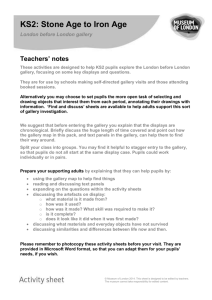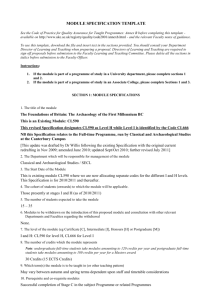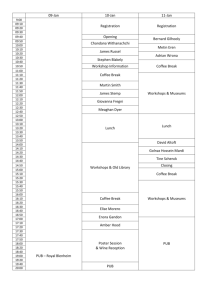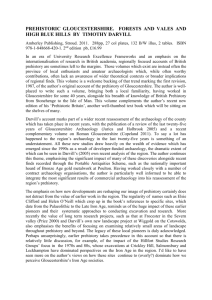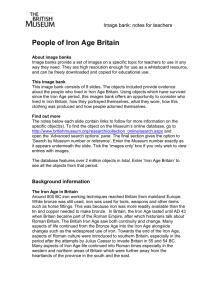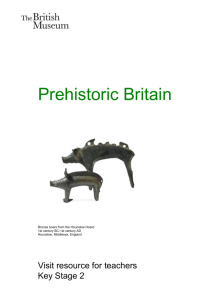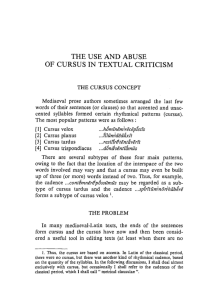Prehistory glossary
advertisement
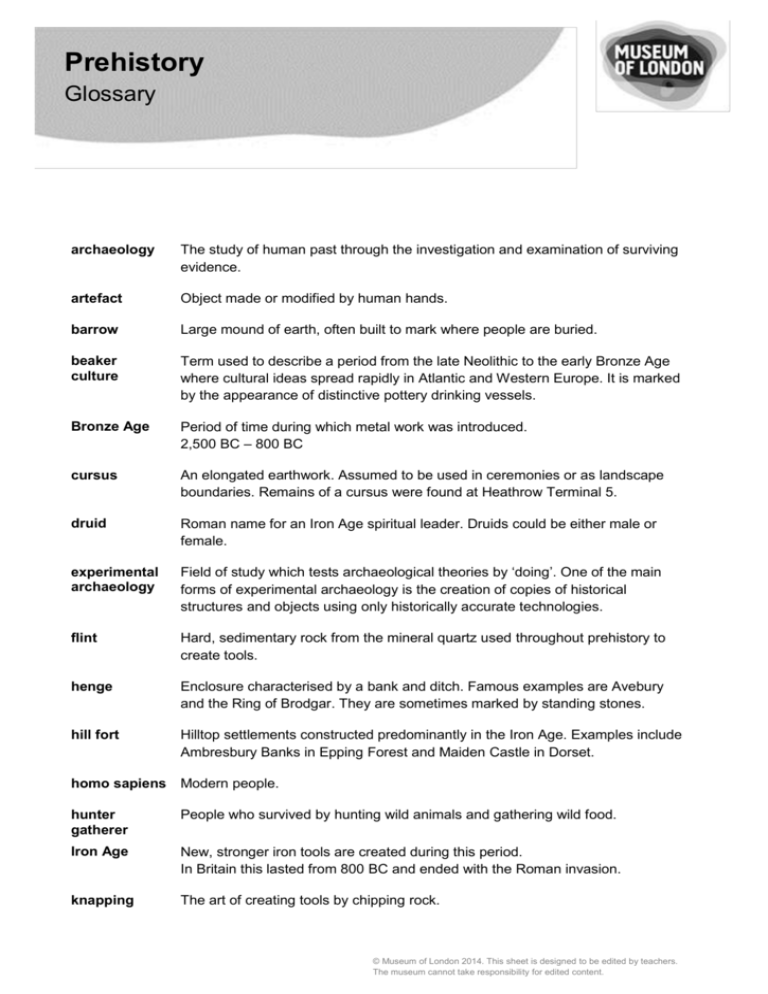
Prehistory Glossary archaeology The study of human past through the investigation and examination of surviving evidence. artefact Object made or modified by human hands. barrow Large mound of earth, often built to mark where people are buried. beaker culture Term used to describe a period from the late Neolithic to the early Bronze Age where cultural ideas spread rapidly in Atlantic and Western Europe. It is marked by the appearance of distinctive pottery drinking vessels. Bronze Age Period of time during which metal work was introduced. 2,500 BC – 800 BC cursus An elongated earthwork. Assumed to be used in ceremonies or as landscape boundaries. Remains of a cursus were found at Heathrow Terminal 5. druid Roman name for an Iron Age spiritual leader. Druids could be either male or female. experimental archaeology Field of study which tests archaeological theories by ‘doing’. One of the main forms of experimental archaeology is the creation of copies of historical structures and objects using only historically accurate technologies. flint Hard, sedimentary rock from the mineral quartz used throughout prehistory to create tools. henge Enclosure characterised by a bank and ditch. Famous examples are Avebury and the Ring of Brodgar. They are sometimes marked by standing stones. hill fort Hilltop settlements constructed predominantly in the Iron Age. Examples include Ambresbury Banks in Epping Forest and Maiden Castle in Dorset. homo sapiens Modern people. hunter gatherer People who survived by hunting wild animals and gathering wild food. Iron Age New, stronger iron tools are created during this period. In Britain this lasted from 800 BC and ended with the Roman invasion. knapping The art of creating tools by chipping rock. © Museum of London 2014. This sheet is designed to be edited by teachers. The museum cannot take responsibility for edited content. land bridge A strip of land or wider land connection joining two landmasses. Britain was connected to the rest of Europe via a land bridge until around 6,500BC Mesolithic Age The Middle Stone Age. A period of time in which the climate warmed and the environment became forested. People were hunter gatherers and made sophisticated tools such as bows and arrows to hunt small game. 8,800 BC – 4,500 BC Neanderthal Early people who lived during the Old Stone Age. Neolithic Age New stone Age. A period of time in which there was a transition towards farming, pottery and house building. 4,500 BC – 2,500 BC Palaeolithic Age The Old Stone Age. A period of time in which people began to make tools from stone, bone and wood. In Britain this period lasted from around 900,000 BC – 8,800 BC prehistory The time before written records. Prehistory does not occur simultaneously across the world. In Britain the prehistoric period ends in AD 43 with the Roman invasion. smelting Heating rocks to extract metals contained within them. torc Iron Age jewellery. Neck ring made of twisted metal. fossil The remains or impression of a prehistoric plant or animal embedded in rock and preserved in petrified form. © Museum of London 2014. This sheet is designed to be edited by teachers. The museum cannot take responsibility for edited content.
